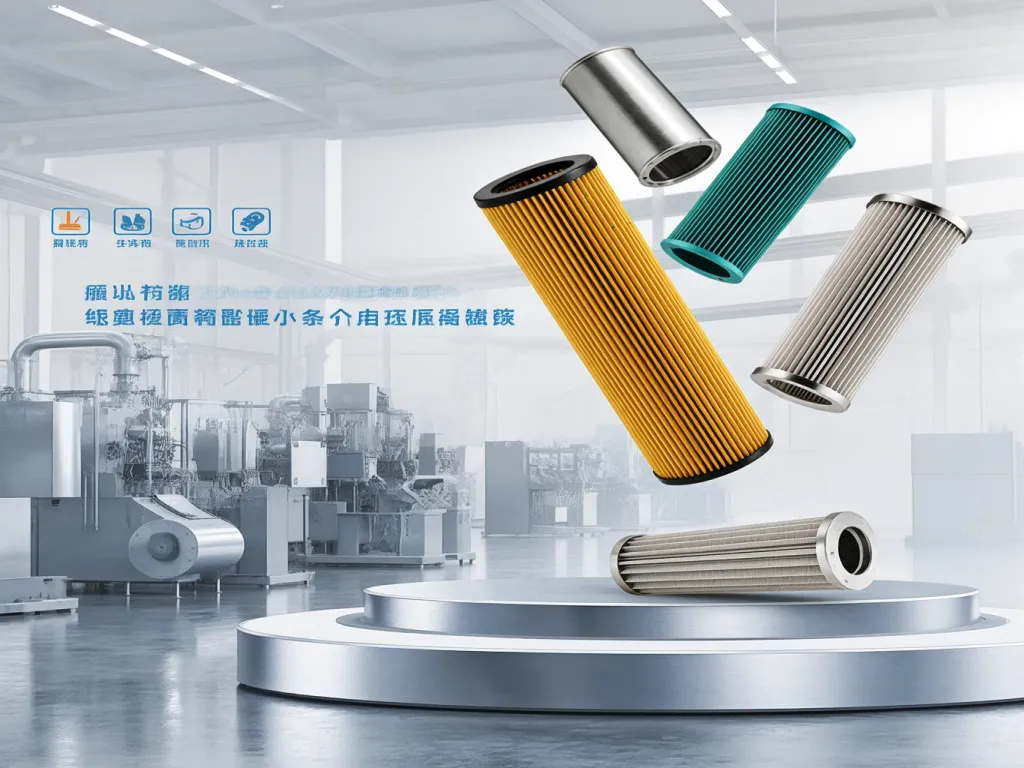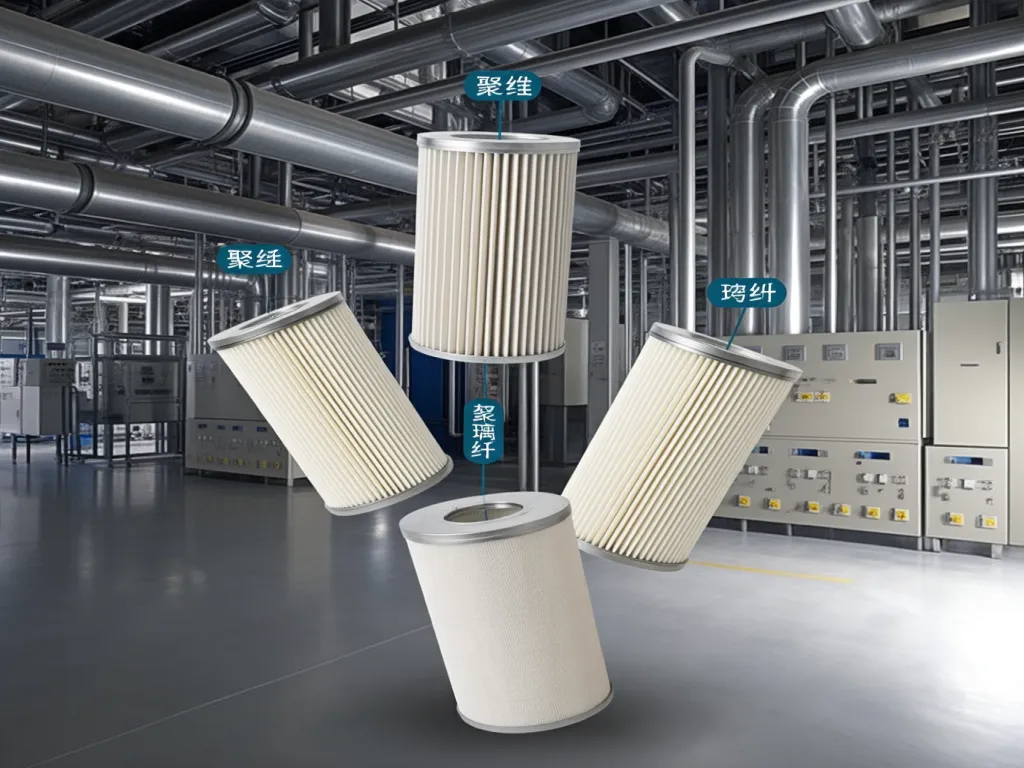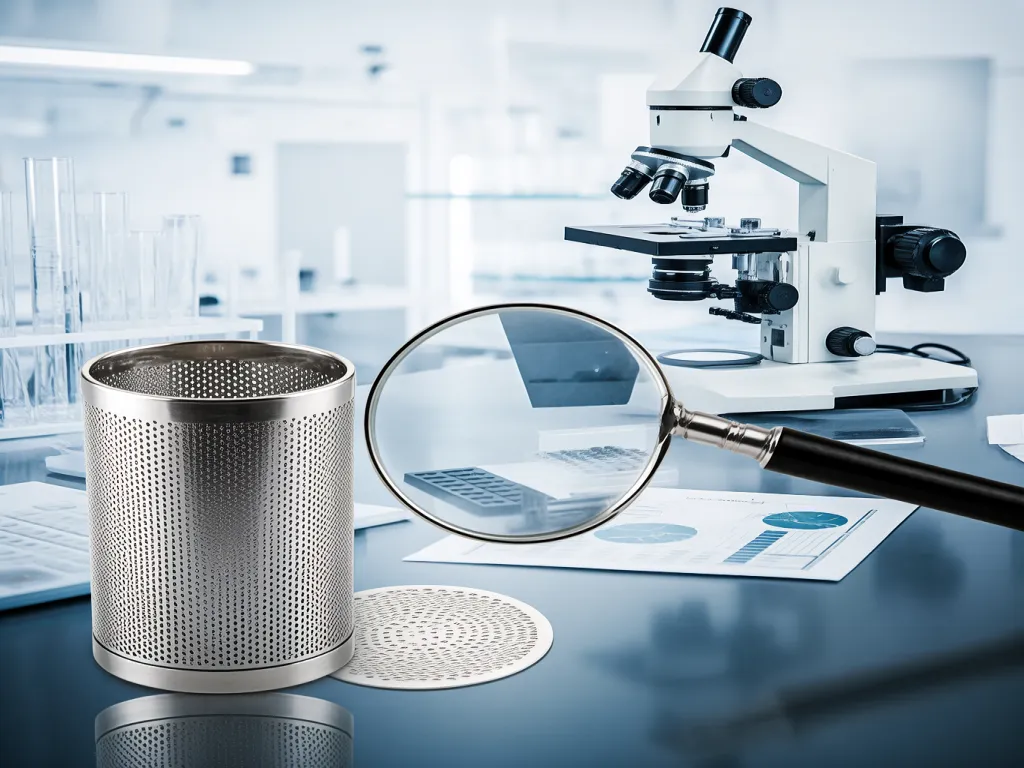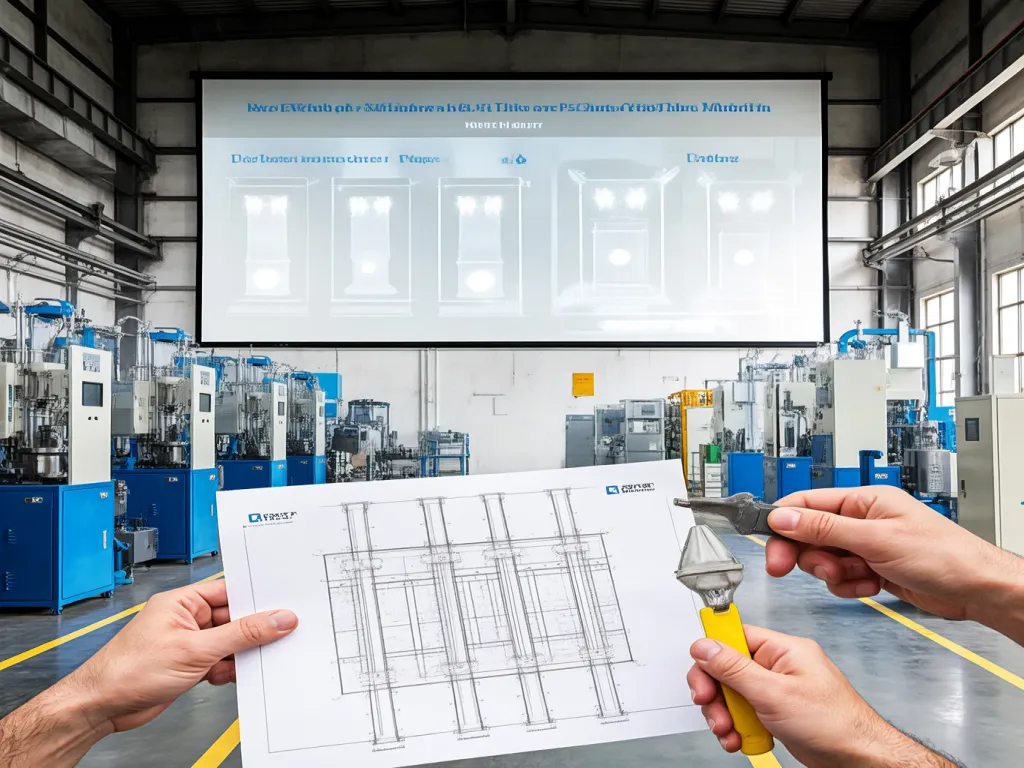Industrial Filter Bag Guide: Choose Your Perfect Filterbag

When it comes to industrial filtration, the right filterbag can make all the difference. Whether you’re dealing with dust, liquids, or gases, choosing a filterbag that matches your specific requirements is crucial for efficiency and cost-effectiveness. But with so many options available, how do you know which one is best for your application? In this guide, we’ll walk you through the key factors to consider when selecting a filterbag, from material selection to filtration accuracy and lifespan.

The Art of Material Selection: Analyzing the Pros and Cons of Different Materials (Such as Polyester, Polypropylene, Fiberglass, etc.) and Their Suitability in Specific Industrial Environments
When it comes to industrial filter bags, the material you choose can make or break your filtration system. It’s not just about picking a bag that fits; it’s about selecting a material that can withstand the rigors of your specific industrial environment. So, how do you navigate through the sea of options like polyester, polypropylene, and fiberglass? Let’s dive in and explore the pros and cons of each, helping you make an informed decision.
Polyester Filter Bags: Durability Meets Versatility
Polyester filter bags are the workhorses of the filtration world. Their resistance to chemicals and abrasion makes them suitable for a wide range of industrial applications. Whether you’re filtering out dust in a woodworking shop or capturing fine particles in a pharmaceutical plant, polyester can handle the job. For those seeking wholesale options, consider exploring 7-inch polyester filter socks from factory suppliers to meet your bulk needs. Its high melting point also means it can operate in environments where temperatures might spike. However, as mentioned earlier, polyester isn’t immune to all chemicals. In environments with strong acids or alkalis, you might notice a decline in performance over time. Regular inspections and replacements can help mitigate this issue, but it’s something to keep in mind when making your selection.
Polypropylene Filter Bags: Chemical Resistance at Its Best
If your industrial process involves a lot of chemicals, polypropylene filter bags are worth considering. Their resistance to acids and alkalis is unmatched, making them ideal for environments where these substances are prevalent. Additionally, their lightweight nature and low moisture absorption rate make them easy to handle and install. For bulk procurement, you might want to check out wholesale nonwoven needle felt filter bags from factory suppliers. But, as with any material, there are trade-offs. Polypropylene’s lower heat resistance means it can’t handle the same high temperatures as polyester or fiberglass. So, if your operation involves heat, you’ll need to look elsewhere.
Fiberglass Filter Bags: High-Temperature Heroes
When it comes to high-temperature applications, fiberglass filter bags are the champions. They can withstand extreme heat without losing their shape or filtration efficiency, making them perfect for industries that operate at elevated temperatures. Fiberglass also offers superior filtration, capturing particles that other materials might miss. However, their brittleness and potential health hazards require careful handling and proper safety protocols. If you can manage these aspects, fiberglass can be a game-changer for your industrial filtration needs.

The Science of Filtration Accuracy: Impact, Selection, and Cost-Benefit Analysis
When it comes to industrial filtration, the accuracy of your filter bag isn’t just a detail—it’s the cornerstone of efficiency, product quality, and operational cost. Imagine trying to catch fish with a net full of holes; the bigger the holes, the more fish escape. Similarly, in industrial processes, the ‘holes’ in your filter bag determine what gets through and what stays behind. Let’s dive into how filtration accuracy affects your industrial workflow, how to choose the right level, and the trade-offs between high-precision filtration and its costs.
The Ripple Effect of Filtration Accuracy on Industrial Processes
Filtration accuracy, often measured in microns (µm), dictates the smallest particle size that a filter bag can retain. This seemingly simple metric has profound implications across various industries. In pharmaceuticals, for instance, even a minuscule amount of contaminant can alter drug efficacy or safety. Here, ultra-high-precision filter bags, capable of trapping particles as small as 1 µm or less, are indispensable. On the other hand, in industries like cement manufacturing, where the goal is to remove larger particulates to protect downstream equipment, a filter bag with a coarser rating (say, 50-100 µm) might suffice. But the impact doesn’t stop at product purity. Filtration accuracy also influences process efficiency. A clogged filter bag, due to choosing one with too fine a rating for the application, can lead to increased pressure drops, reduced flow rates, and higher energy consumption. Conversely, a bag too coarse may allow contaminants to pass through, causing wear and tear on machinery, leading to frequent breakdowns and maintenance costs.
Navigating the Maze: Choosing the Right Filtration Level
So, how do you strike the perfect balance? The answer lies in understanding your specific needs. Start by asking: What are you filtering? What’s the size range of the contaminants? What’s the acceptable level of impurities in your final product? And, importantly, what’s the cost of not filtering effectively? For example, in food and beverage processing, where hygiene is paramount, you might opt for a filter bag with a high filtration accuracy to ensure no bacteria or spores pass through. In contrast, in metalworking fluids, where the goal is to remove metal shavings and larger debris, a lower precision filter might be adequate and more cost-effective. Another crucial factor is the flow rate. High-precision filters naturally restrict flow more than coarser ones. If your process requires a high volume of fluid to be processed quickly, you might need to compromise on precision slightly to maintain throughput.
Weighing the Scales: Benefits vs. Costs of High-Precision Filtration
High-precision filtration comes with its share of benefits. It ensures product purity, protects downstream equipment, and can even enhance process efficiency by preventing clogs and reducing downtime. However, these benefits come at a cost. High-precision filter bags are typically more expensive, both in terms of initial purchase and operational costs (due to more frequent replacements as they clog faster). So, is it worth it? The answer depends on your specific application. If the cost of contaminants in your final product is high (think pharmaceuticals or semiconductors), then investing in high-precision filtration is a no-brainer. But if the stakes are lower, and the cost of frequent replacements outweighs the benefits of ultra-pure filtration, a middle-ground approach might be more prudent.
In conclusion, the science of filtration accuracy is a delicate dance between precision and practicality. By understanding your industrial process’s unique needs, you can choose a filter bag that strikes the perfect balance, ensuring efficiency, product quality, and cost-effectiveness. Remember, the right filter bag isn’t just a component—it’s a strategic investment in your industrial success.

How to Extend Filter Bag Lifespan: Strategies for Longevity
When it comes to industrial filtration, the lifespan of your filter bag isn’t just a number—it’s a direct reflection of efficiency, cost savings, and operational reliability. Think about it: every time you replace a filter bag prematurely, you’re not just losing a piece of equipment; you’re losing productivity, incurring unexpected downtime, and draining your budget. So, how can you ensure your filter bags last longer, perform better, and reduce those pesky replacement frequencies? Let’s dive into three proven strategies: optimizing structural design, implementing regular maintenance, and selecting wear-resistant materials.
Structural Design Optimization: The Foundation of Durability
First things first—your filter bag’s structural design is the backbone of its longevity. A poorly designed bag will cave under pressure (literally), leading to premature failure. But what does ‘optimized structural design’ even mean? It’s about creating a filter bag that distributes stress evenly, prevents abrasion hotspots, and accommodates the specific demands of your industrial process.
For instance, consider a bag designed with reinforced seams. Traditional stitching can create weak points where tears initiate. By using ultrasonic welding or heat-sealed seams, you eliminate these vulnerabilities. Similarly, a bag with a tapered or conical shape can improve flow dynamics, reducing the buildup of particulates on the surface and extending the time between cleanings.
Another design consideration is the placement of support rings or cages. If these aren’t properly aligned or sized, they can cause the bag to rub against itself or the housing, leading to abrasion. A well-designed cage ensures the bag maintains its shape, even under high pressure, preventing unnecessary wear.
Regular Maintenance: The Unsung Hero of Longevity
You wouldn’t drive a car for years without changing the oil, right? The same principle applies to filter bags. Regular maintenance isn’t just about cleaning; it’s about proactive care that prevents small issues from becoming catastrophic failures.
Start with a routine inspection schedule. Every few weeks (or as dictated by your process), visually inspect the bags for signs of wear, such as thinning fabric, frayed edges, or discoloration. Use a flashlight to check for clogs or particulate buildup, which can restrict airflow and increase pressure on the bag.
Cleaning is equally critical, but it’s not a one-size-fits-all process. For example, if you’re dealing with sticky or oily particulates, a simple backpulse might not be enough. Consider using a chemical cleaning agent designed for your specific contaminant. However, be cautious—over-cleaning or using harsh chemicals can degrade the bag’s material over time.
Don’t forget about the housing and support system. A dirty or misaligned housing can cause the bag to rub or sag, accelerating wear. Regularly check for debris buildup, corrosion, or misalignment and address these issues promptly.
Wear-Resistant Materials: Choosing the Right Armor
The material of your filter bag is its first line of defense against the harsh realities of industrial filtration. Not all materials are created equal, and choosing the wrong one can lead to rapid degradation. So, how do you pick a wear-resistant material that suits your needs?
Let’s break it down:
- Polyester: A go-to for general-purpose filtration, polyester offers good chemical resistance and durability. However, it can struggle with high temperatures or abrasive particulates. If your process involves mild chemicals and moderate temperatures, polyester is a cost-effective choice.
- Polypropylene: This material shines in acidic environments and withstands higher temperatures than polyester. It’s also more resistant to abrasion, making it ideal for processes with coarse particulates.
- Glass Fiber: When you need heat resistance (up to 500°F or more) and chemical inertness, glass fiber is your ally. It’s commonly used in cement plants, incinerators, and other high-temperature applications. However, it’s more brittle than other materials, so handle with care during installation.
- PTFE (Teflon): The ultimate in chemical resistance and temperature tolerance (up to 600°F), PTFE is perfect for aggressive environments. It’s also non-stick, reducing particulate buildup. The downside? Cost. PTFE bags are pricier, but their longevity often justifies the investment.
Beyond the base material, consider coatings or treatments. For example, a PTFE membrane can enhance a polyester bag’s performance in sticky applications, while a silicone coating can improve release properties.
The Bottom Line: A Holistic Approach
Extending your filter bag’s lifespan isn’t about focusing on one strategy in isolation. It’s about integrating structural design, maintenance, and material selection into a cohesive plan. Imagine a scenario where you’ve chosen a wear-resistant material but neglected regular inspections—a small tear could go unnoticed, leading to a catastrophic failure. Or, what if you’ve optimized the design but used a material unsuitable for your particulates? The bag would degrade rapidly, regardless of its shape.
The key is to view your filter bags as a system. Each component—design, maintenance, material—interacts with the others. By addressing all three, you create a resilient filtration solution that minimizes downtime, reduces costs, and keeps your operations running smoothly.
So, ask yourself: Are you treating your filter bags as disposable commodities, or as critical assets worthy of investment? The choice is yours, but the rewards of a proactive approach are undeniable. Ready to take the next step? Let’s explore how these strategies can be tailored to your specific industrial needs.
Selecting the right filterbag isn’t just about finding a product—it’s about optimizing your industrial processes for peak performance. By considering material properties, filtration accuracy, and strategies to extend lifespan, you can ensure your filterbag delivers maximum value. Ready to take your industrial filtration to the next level? Explore our range of premium filterbags tailored for diverse applications, and don’t hesitate to share this guide with colleagues who could benefit from smarter filterbag choices. The next step in efficiency is just a click away!

